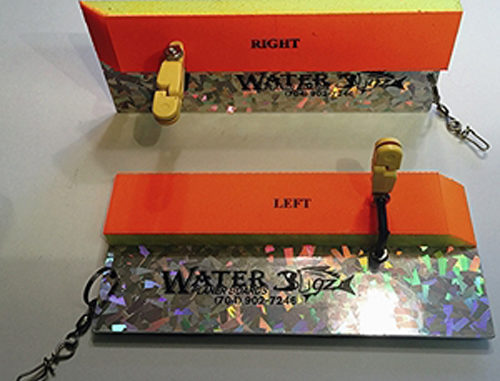
It wouldn’t be possible or effective to run a trolling setup without planer boards on the outer lines. The rectangular boards attach to the fishing line and pull them away from the boat at an angle as the water pushes past.
Instead of having six rods all trailing directly behind the boat, two rods can be set to cover water more than 100 feet out from each side of the boat, allowing fishermen to cover more area while keeping the individual lines untangled.
Attaching the board to the line is the only effort required to make these tools work. Attach the boards closer to or farther from the hook to determine the depth at which the bait is fished. The closer to the hook, the higher the bait will ride in the water — and vice versa.
Controlling the distance between the board and the boat is just as easy: simply dole out more line or reel it back in. Trollers usually let out 15 to 25 yards to begin with and adjust as needed to get the desired distance.
Keeping the boat’s speed up keeps the planers working. Guide Colt Bass hovers near 1 mph when using live bait but pushes it to 2 mph when using an artificial umbrella rig later in the year.




Be the first to comment